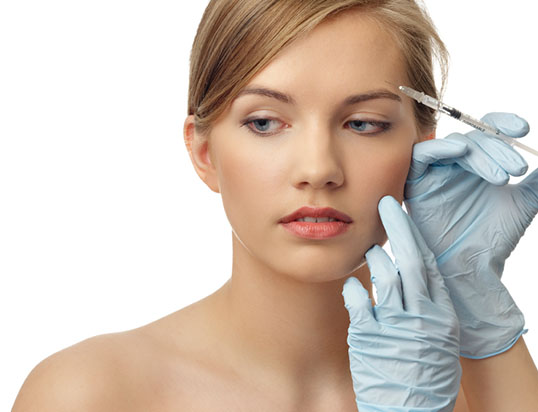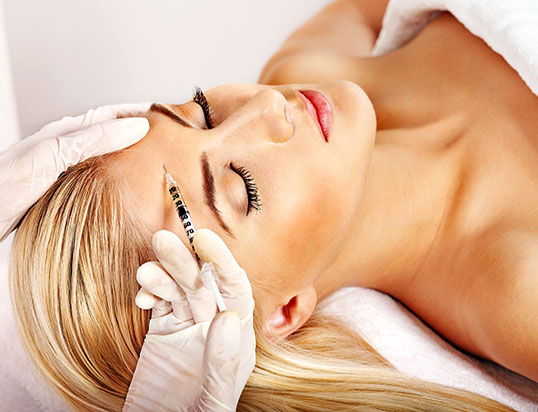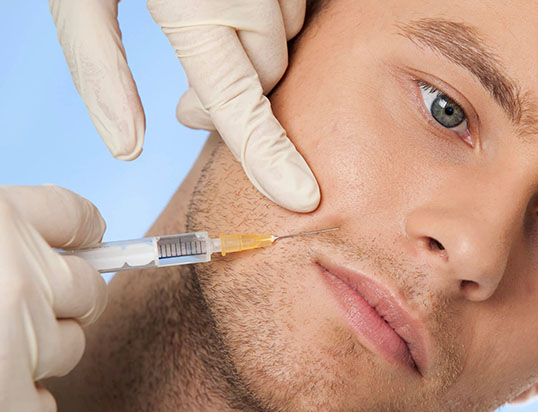- Home
- Botulinum toxin type A
-
Overview
What are Botox Injections?
Botox is the most popular cosmetic surgery treatment, with more than 6 million Botox treatments administered each year. Botox is a neurotoxin derived from Clostridium botulinum, an organism found in the natural environment where it is largely inactive and non-toxic.
Botulinum toxin type A is used to reduce fine lines and wrinkles by paralysing the underlying muscles. People also use BOTOX® to treat excessive sweating, migraines, muscular disorders, and some bladder and bowel disorders. The cosmetic form of botulinum toxin, often referred to by its product name BOTOX®, is a popular non-surgical injection that temporarily reduces or eliminates frown lines, forehead creases, crows-feet near the eyes and thick bands in the neck.
-
before treatment
What you should know before getting Botox injections
The toxin blocks the nerve impulses, temporarily paralyzing the muscles that cause wrinkles while giving the skin a smoother, more refreshed appearance. Studies have also suggested that BOTOX is effective in relieving migraine headaches, excessive sweating and muscle spasms in the neck and eyes.
Botox is most effective on wrinkles that haven’t quite set - “dynamic” wrinkles that appear while you’re moving your face, such as when you frown. With Botox, side effects are possible: headaches, bruising, pain at the site of injection, and, in less than 1% of cases, drooping eyelids or eyebrows that return to their natural position within a few months.
Be prepared to discuss:
- · Your goals
- · Medical conditions, drug allergies and medical treatments
- · Current medications, vitamins, herbal supplements,
alcohol, tobacco, and drugs
Your surgeon may also:
- · Evaluate your general health status and any pre-existing
health conditions or risk factors - · Discuss likely outcomes and any risks or potential
complications
-
Risks and Safety
Important facts about the safety and risks
Pills such as aspirin and ibuprofen may cause bruising at the site of the needle injection, as they cause a thinning of the blood and increase bruises. Avoid these pills for at least two weeks prior to your treatment.
Rubbing the treated area after Botox injections is not recommended, as this can cause the Botox to migrate to another area of your face, leaving your face weak and temporarily droopy.
The risks include:- · Bruising and pain at the injection site
- · Flu-like symptoms
- · Headache
- · Nausea
- · Redness
- · Temporary facial weakness or drooping
- · Very rarely, the toxin can spread beyond the treatment area, which can cause botulismlike signs and symptoms such as breathing problems, trouble swallowing, muscle weakness, and slurred speech.
Be sure to ask questions:It’s natural to feel some anxiety, whether it’s excitement for your anticipated new look or a bit of stress. Don’t be shy about discussing these feelings with your surgeon.


